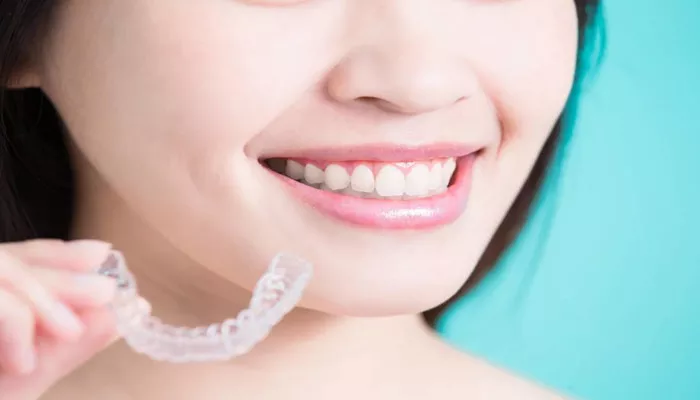After completing orthodontic treatment with braces, many patients are eager to maintain their straightened teeth and achieve the perfect smile. Retainers play a crucial role in this process. However, a common question arises: can retainers close small gaps after braces? In this article, we will explore the purpose of retainers, how they work, their limitations, and whether they can effectively close gaps that may remain after braces.
Understanding Retainers
1. What Are Retainers?
Retainers are custom-made dental devices that help maintain the position of teeth after orthodontic treatment. They are typically made from plastic or a combination of plastic and metal. There are two main types of retainers:
Fixed Retainers: These are bonded to the back of the teeth and remain in place permanently or for a specified period. They are less visible and provide continuous support to keep teeth aligned.
Removable Retainers: These can be taken out for eating, brushing, and flossing. They are usually made of clear plastic or acrylic and can be worn at night or throughout the day, depending on the orthodontist’s recommendations.
2. The Purpose of Retainers
The primary purpose of retainers is to prevent teeth from shifting back to their original positions after braces are removed. Teeth have a natural tendency to move, and retainers help maintain the new alignment. Retainers also allow the bone and gums to adjust to the new positions of the teeth.
Can Retainers Close Gaps?
1. Types of Gaps After Braces
After braces, some patients may notice small gaps between their teeth. These gaps can occur for various reasons, including:
Incomplete Movement: Sometimes, braces may not fully close all gaps during treatment.
Teeth Shifting: After braces, teeth can shift slightly, leading to new gaps.
Bone and Gum Changes: As the bone and gums adjust to the new positions of the teeth, small gaps may appear.
2. Can Retainers Close Gaps?
While retainers are designed to maintain the position of teeth, they are not primarily intended to close gaps. However, they can help in specific situations:
Minor Adjustments: In some cases, removable retainers can exert slight pressure on teeth, which may help close very small gaps. This is more effective for gaps that are minimal and have just formed after braces.
Retention Phase: Retainers can help stabilize teeth after they have moved slightly, preventing further shifting and maintaining the alignment achieved with braces.
3. Limitations of Retainers
Although retainers can help with minor adjustments, they do have limitations:
Not a Substitute for Active Treatment: Retainers are not designed for significant tooth movement. If gaps are larger or if there are alignment issues, additional orthodontic treatment may be necessary.
Pressure and Movement: The amount of pressure exerted by a retainer is minimal compared to braces. Therefore, retainers are unlikely to close larger gaps effectively.
When to Consider Additional Treatment
1. Assessing the Gaps
If you notice gaps after braces, it is essential to assess their size and cause. Here are some factors to consider:
Size of the Gaps: Small gaps may respond to retainer adjustments, while larger gaps may require further intervention.
Time Since Treatment: If you have recently completed orthodontic treatment, some shifting is normal. However, if gaps persist over time, consult your orthodontist.
2. Consulting Your Orthodontist
If you are concerned about gaps after braces, schedule a consultation with your orthodontist. They can evaluate your teeth and recommend the best course of action. Possible options may include:
Adjusting Retainers: Your orthodontist may suggest adjustments to your current retainer to help close small gaps.
Additional Orthodontic Treatment: In some cases, further treatment with braces or clear aligners may be necessary to achieve the desired results.
Tips for Maintaining a Beautiful Smile After Braces
1. Wear Your Retainer as Directed
To prevent teeth from shifting and to maintain your smile, it is crucial to wear your retainer as instructed by your orthodontist. This may involve wearing it full-time initially and then transitioning to nighttime wear.
2. Maintain Good Oral Hygiene
Good oral hygiene is essential for keeping your teeth and gums healthy after braces. Follow these tips:
Brush and Floss Daily: Continue brushing twice a day and flossing regularly to remove plaque and food debris.
Use Mouthwash: An antibacterial mouthwash can help reduce plaque buildup and keep your mouth fresh.
3. Monitor Your Teeth
Keep an eye on your teeth after braces. If you notice any gaps or changes in alignment, contact your orthodontist promptly. Early intervention can prevent more significant issues later on.
4. Regular Dental Checkups
Schedule regular checkups with your dentist and orthodontist. These visits are essential for monitoring your oral health and ensuring that your teeth remain in the desired position.
Conclusion
Retainers are an essential part of post-orthodontic care, helping to maintain the alignment achieved with braces. While they can assist in closing very small gaps, they are not a replacement for active orthodontic treatment. If you have concerns about gaps after braces, consult your orthodontist for a thorough evaluation and personalized recommendations.
By following your orthodontist’s instructions, maintaining good oral hygiene, and regularly monitoring your teeth, you can enjoy a beautiful smile for years to come. Remember, the goal is not just to have straight teeth but to maintain a healthy and confident smile. If gaps persist or if you have any concerns, do not hesitate to seek professional advice to ensure your smile remains as perfect as possible.
Related topics:

